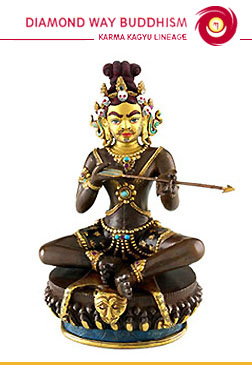 |
|||
|
|||
 |
The art of making and painting Buddhist statues.Over many centuries Tibetan sculptors preferred metal (bronze, copper, brass) when choosing the source material. Statues were founded from a variety of alloys. Along with medicine, grammar, logic and philosophy art and craft are among the five disciplines of Tibetan education. The art of making religious statues as a base for meditation practice was highly respected and widespread. Creation of a statue brings the artist a big merit (positive impressions in the mind). That is why knowledge and skill needed to found from metal were transmitted by artists from generation to generation, which contributed to preserving a high artistic value of the skill over centuries up to the present.In Mahakala-Pundarika-Sutra there are a lot of favorable conditions described which appear as a result of creation of Buddha images: long life, merit and wealth, health, charisma and peace of mind. The same results one gets when dealing respectfully with images of a Buddha and Buddha-aspects. The roots of Tibetan art of making statues go back to Indian techniques based on description of a Buddha's appearance. These techniques are contained in the teachings of Buddhist iconography and meditation (sadhanas in Sansk.). Two of the most well known collections of sadhanas were created by Abhajakaragupta in the11th centure. What follows a difficult process of founding is important for the statue's general embodiment. This is sand grinding, polishing, carving, painting and filling a statue with precious stones, metals, medical plants and relics. Many statues are later covered with gold. The final step in the process is the face coloring. Firstly a bottom layer is put which is later painted with several layers. When a statue is completely colored it's time to 'open its eyes'. A master does it himself on the day of full or new moon. For a statue to be of high quality and 'look alive' all the stages should be done by true artists. © © Russian Buddhist Association of the Karma Kagyu school 2009 |


|

|

|